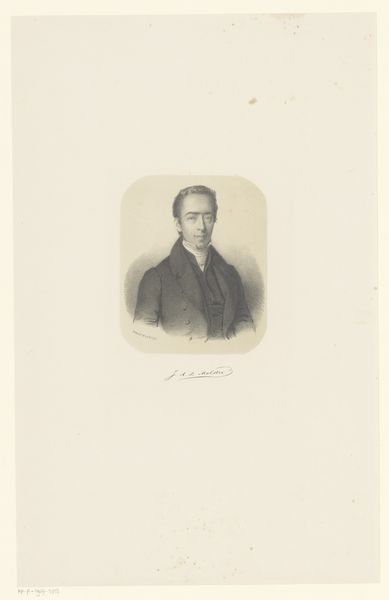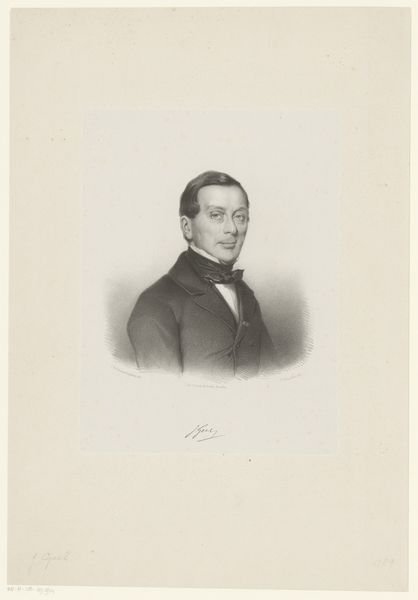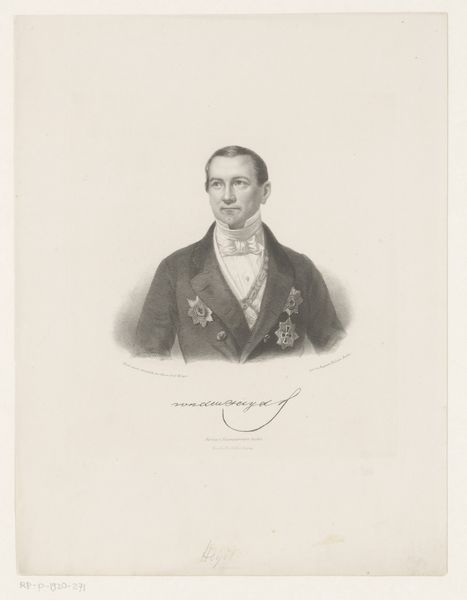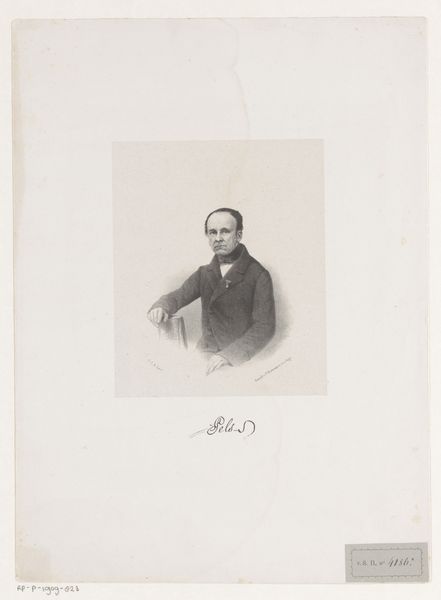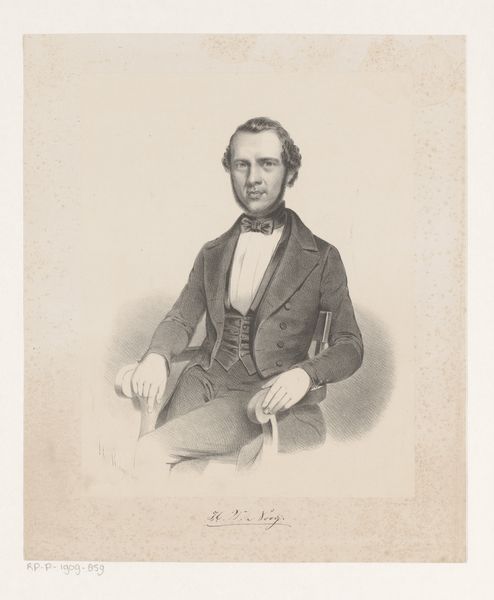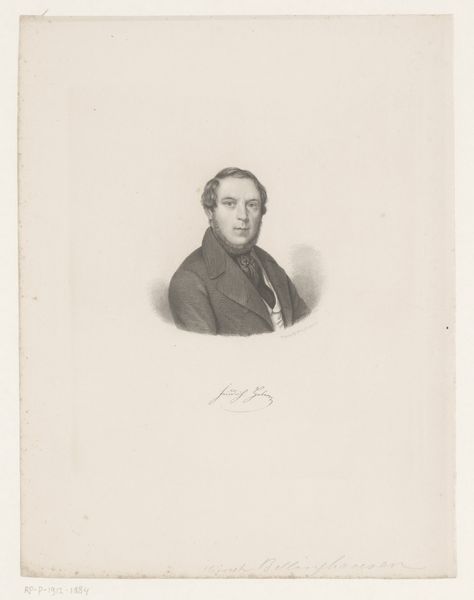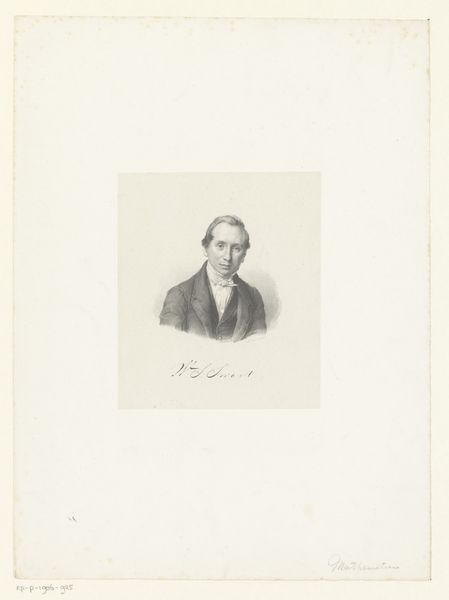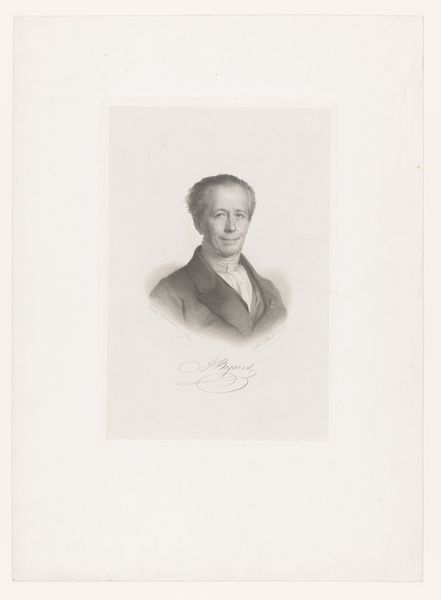
drawing, pencil
#
portrait
#
pencil drawn
#
drawing
#
light pencil work
#
pencil sketch
#
pencil drawing
#
pencil
#
portrait drawing
#
pencil work
#
academic-art
#
realism
Dimensions: height 365 mm, width 272 mm
Copyright: Rijks Museum: Open Domain
Editor: Here we have a pencil drawing from 1853, "Portret van Jean Esaie Christierne de Wijs" by Kornelis Jzn de Wijs. There’s a somberness to his expression and the tight-lipped pose. How would you interpret this portrait? Curator: Notice the artist's almost obsessive focus on the details of the sitter's clothing, contrasted with the comparatively softer treatment of the face. What emotional response does this provoke in you? Consider the historical context; portraiture in the mid-19th century often served as a status symbol. Editor: I hadn’t really picked up on that; I can see it, the lines of his jacket and vest feel more prominent. Curator: Think about what these symbols of status communicate. His plain yet meticulously rendered garments and direct gaze represent not only wealth but also character, sobriety, perhaps even a sense of civic duty valued in that period. Does it make you consider him as a particular kind of man of that era? Editor: Yes, a man of that period in the burgeoning Dutch middle class, wanting to express his stability. And those sharp, controlled pencil strokes... Curator: Exactly! They mirror the controlled social environment and the sitter's self-presentation. How do you perceive the interplay of the rigid pose and softer features now? Editor: I see that, perhaps unintentionally, they provide a glimpse beneath that rigid exterior. Thank you, that perspective unlocks so many layers. Curator: Indeed, the image reveals how personal identity and societal expectations were carefully negotiated in visual language of the 19th century. It's in those small details that meaning often resides.
Comments
No comments
Be the first to comment and join the conversation on the ultimate creative platform.
